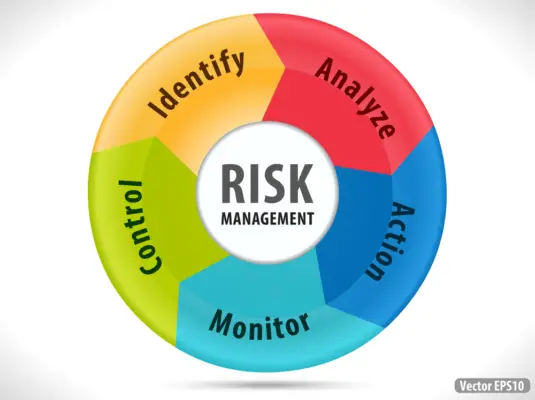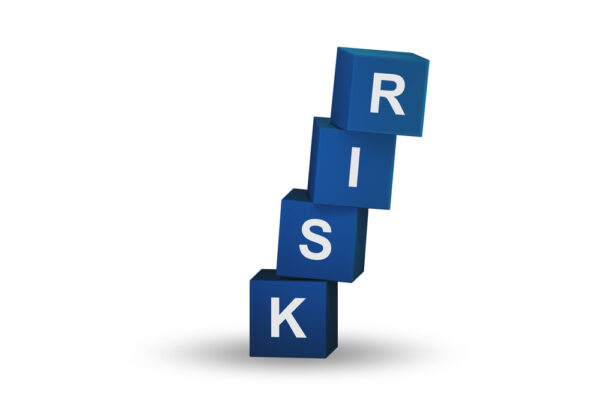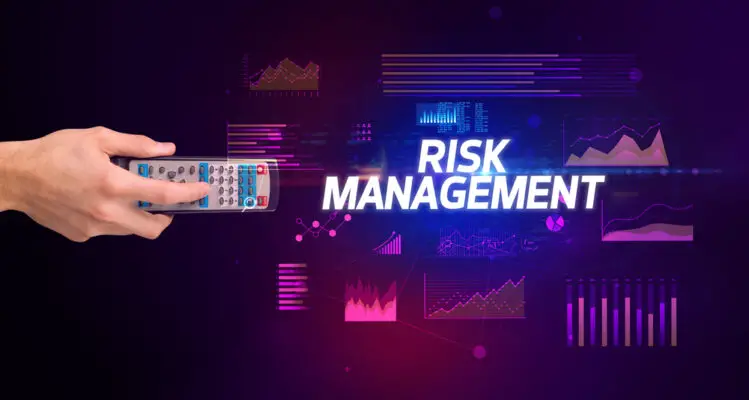Risk controls refer to the policies and procedures put in place by organizations to identify, assess, monitor, and manage potential risks that could affect their objectives. Effective risk controls help organizations reduce uncertainty while ensuring they meet their strategic goals.
In today’s fast-paced and unpredictable economic environment, companies must be equipped with the right tools and strategies to mitigate risks that could negatively impact their operations.
This article explores risk controls, the types available for businesses, how to implement them effectively, and examples of effective risk control measures.
Additionally, we will examine the benefits of effective risk control in mitigating losses associated with risks such as financial loss or reputational damage.
These concepts are crucial for managers designing robust risk management practices.

The Importance of Risk Controls in Business and Financial Management
Effective management of potential threats is crucial for achieving sustainable success in business and finance. Risk controls play a fundamental role in identifying, assessing, and mitigating risks that businesses may face.
In integrating risk controls into the decision-making process, companies can evaluate potential outcomes and allocate resources accordingly, leading to better-informed decisions.
The role of risk controls in decision-making is essential to ensure that organizations operate within their risk appetite levels while achieving their objectives. Companies may be exposed to financial losses or reputational damage without adequate risk controls.
Therefore, it is vital for organizations to identify all potential risks associated with their activities and implement appropriate measures to manage them effectively.
Integration of risk controls into organizational culture helps foster a sense of awareness among employees towards the importance of managing risks proactively.
This approach nurtures a culture of accountability where employees understand their role in identifying and mitigating risks within their respective departments. This leads to a more robust control environment that enhances transparency and reduces fraud incidents.
Effective implementation of risk controls enables organizations to achieve long-term success by minimizing exposure to uncertain events that could impact their operations negatively.
Integrating these controls into decision-making processes gives management critical information on which they base informed decisions.
Moreover, fostering an organizational culture emphasising proactive risk management promotes accountability at all levels and strengthens its control environment.
Types of Risk Controls
The management of risks in business and financial management involves the implementation of a variety of risk controls. These controls are designed to minimize or eliminate certain risks that could negatively impact an organization’s success.
Physical, procedural, and technological controls are three common risk controls that can mitigate different types of risks within an organization.
Physical Controls
Physical measures such as barriers, locks, and surveillance cameras prevent unauthorized access and protect physical assets. These measures are considered one of the most fundamental risk controls in ensuring the safety and security of a facility or organization.
Certain considerations should be considered in designing these physical controls to ensure their effectiveness. For instance, the design should address potential vulnerabilities and threats from external or internal sources.
Effectiveness evaluation is also crucial in determining whether physical controls can mitigate risks effectively. This involves conducting regular assessments of the performance of installed physical controls against identified risks.
In evaluating their effectiveness, organizations can identify weaknesses or gaps in their existing measures and take corrective actions to enhance their security posture further.
Physical controls play a vital role in mitigating potential risks to organizational assets by restricting unauthorized access and deterring criminal activities through deterrence measures such as surveillance cameras or other monitoring systems.
Procedural Controls
Procedural controls are essential security measures that establish policies, guidelines, and protocols to regulate access to sensitive information and maintain a secure environment.
These controls involve the development of standard operating procedures (SOPs) that employees must follow to ensure their actions align with organizational goals and objectives. Procedural controls can be implemented in various areas, including human resources, finance, operations, and IT.
Procedural control benefits include an increased level of accountability among employees who are responsible for implementing these controls. This helps to reduce the risk of unauthorized access or malicious activities within an organization.
In addition, procedural controls provide a framework for monitoring compliance with regulatory requirements and industry standards.
However, there may be challenges during implementation, such as resistance from employees who may view these controls as overly restrictive or cumbersome.
Organizations must develop effective communication strategies when implementing procedural controls to ensure employee buy-in and minimize disruptions in daily operations.
Technological Controls
By leveraging technological systems and tools, organizations can create a robust security infrastructure that promotes efficient data access management and facilitates threat detection.
Technological controls comprise cybersecurity measures and IT safeguards to protect information systems from unauthorized access, misuse, or alteration. These controls include:
- Firewalls, which are used to block unauthorized network traffic while allowing authorized traffic to flow freely.
- Intrusion detection/prevention systems (IDS/IPS), detect and prevent attacks by monitoring network traffic for suspicious activity.
- Encryption technologies convert sensitive information into unintelligible format during transmission or storage to prevent unauthorized access.
- Antivirus software, which is used to detect and remove malware infections from computer systems.
- Data loss prevention (DLP) solutions prevent the accidental or intentional leakage of confidential information by detecting attempts to copy or transmit sensitive data outside the organization’s network perimeter.
Implementing Risk Controls
Implementing risk controls involves several key steps to mitigate or avoid potential risks.
The first step is identifying and assessing risks, which requires a thorough understanding of the potential hazards facing an organization or project.
Once risks are identified and assessed, it is important to prioritize them based on their likelihood and impact.
Finally, strategies can be developed to mitigate or avoid the most significant risks, ensuring that organizations can operate safely and effectively in a constantly evolving business environment.
Identifying and Assessing Risks
Identifying and evaluating potential hazards is a crucial step in ensuring the safety and security of any project or operation. Risk assessment techniques are employed to identify, evaluate, and prioritize risks based on their likelihood and severity.
These risk assessments inform risk management strategies that aim to reduce or eliminate the impact of potential hazards.
Risk identification involves systematically reviewing all aspects of a project or operation to identify events that could result in harm, damage, or loss. Once identified, the risks are evaluated using qualitative or quantitative methods to determine their likelihood and severity.
Qualitative analysis involves assigning subjective values such as low-medium-high to the probability and impact of an event, while quantitative analysis uses statistical data to estimate probabilities and impacts.
Combining these two methods provides a comprehensive understanding of the risks involved in an operation, which can then be used to develop risk management strategies.

Prioritizing Risks
Prioritizing potential hazards is a crucial aspect of risk management strategies. Risk assessment involves identifying and assessing risks, but prioritization helps focus on the most significant threats that must be addressed first.
Prioritizing risks allows for a more efficient allocation of resources and attention towards the most concerning issues. One way to prioritize risks is by categorizing them based on their severity and likelihood of occurrence.
High-risk hazards have severe consequences and a high probability of occurring, while low-risk hazards have less severe consequences and a low probability of occurring.
Identifying the highest priority risks is essential as they threaten an organization’s objectives, success, or survival.
Once identified, these high-priority risks can be addressed through appropriate risk management strategies such as risk mitigation or transfer measures.
Developing Strategies to Mitigate or Avoid Risks
Developing effective measures to mitigate or avoid potential hazards is a critical task in risk management, which requires a careful assessment of the underlying factors that contribute to the risks and the development of proactive strategies tailored to address these factors.
Risk management techniques aim to identify, assess, and prioritize risks so that appropriate mitigation strategies can be implemented. Risk mitigation strategies are actions to reduce the likelihood or severity of a potential risk event.
To develop effective risk mitigation strategies, it is essential first to understand the nature and source of each identified risk. Here are some possible steps for developing such strategies:
- Identify all possible sources of risk.
- Determine whether each identified risk can be accepted, transferred, avoided, or mitigated.
- Analyze the consequences and likelihoods of each event.
- Choose an appropriate course of action based on your analysis.
- Implement your chosen strategy and monitor its effectiveness over time.
Examples of Effective Risk Controls
Effective management of potential hazards requires proactive measures that mitigate the likelihood and severity of negative outcomes. Risk control strategies are one way to manage risks effectively.
These strategies aim to either reduce or eliminate risks. The goal is to minimize the impact on an organization’s operations, reputation, stakeholders, and financial resources.
One example of effective risk control is establishing a comprehensive risk management system that includes identifying, assessing, monitoring, and controlling risks.
This system involves developing policies and procedures that ensure employees understand their responsibilities for managing risks in various situations. It also involves conducting regular training sessions for employees to identify potential hazards before they become problematic.
Another example is implementing physical controls such as using personal protective equipment (PPE) in hazardous work environments like construction sites or chemical plants.
PPE can include hard hats, safety goggles, gloves, respirators, and other specialized equipment to protect workers from exposure to harmful substances or injuries from falling objects.
Effective risk controls require a proactive approach that identifies potential hazards before they occur and implements measures to mitigate those risks’ likelihood and severity.
Benefits of Effective Risk Control
Effective risk controls are crucial for any organization to minimize the negative impact of potential risks. In the previous subtopic, we explored some examples of effective risk controls organizations can implement to mitigate potential risks.
These measures include implementing training programs, conducting regular audits, and creating contingency plans in case of emergencies. However, understanding the benefits of these controls is also essential.
One significant benefit of effective risk control is measuring its effectiveness. This assessment allows companies to make necessary adjustments and improve their processes continually. It also helps businesses identify gaps in their current control framework so they can rectify them promptly.
However, despite the numerous advantages of effective risk control measures, organisations face challenges when implementing them successfully. Some common difficulties include resistance from employees who may be reluctant to change their habits or lack adequate resources to invest fully in developing robust risk management programs.
Additionally, some companies may struggle with identifying all possible risks affecting their operations and ensuring adequate safeguards are put in place across all business units.
Governments and organizations worldwide appreciate the importance of implementing effective risk control measures to mitigate potential threats affecting businesses’ overall performance.
Effective implementation requires continuous review and evaluation while identifying areas where improvements must be made or new strategies developed for better results.
Measuring effectiveness provides valuable insights into what works best within an organization’s context while highlighting areas requiring further attention or investment.
Despite challenges faced during implementation stages, such as employee resistance or resource constraints, investing in effective risk management practices remains critical for long-term sustainability and success within today’s rapidly changing business environment.

Frequently Asked Questions
What are the consequences of not implementing risk controls in a business?
The consequences of not implementing risk controls in a business can be severe, negatively impacting the company’s financial stability. Without proper risk controls, businesses are vulnerable to various risks, such as fraud, errors, and noncompliance with regulatory requirements.
These risks can lead to significant financial loss and damage the company’s reputation.
For instance, fraudulent activities by employees or third-party agents can result in substantial losses and legal liabilities for the organization. Inadequate control over operational processes may also lead to errors that could affect product quality or customer service standards, further damaging the business’s reputation.
How do risk controls differ from risk management?
While risk management involves identifying, assessing, and prioritizing risks and developing plans to mitigate them, risk control strategies focus on implementing specific techniques that reduce the likelihood or impact of a particular risk.
One research is that companies that implement adequate risk controls see a 25% reduction in the frequency of incidents compared to those with poor controls in place (PwC).
Risk control techniques include preventive measures such as safety protocols and training programs, detective measures like audits and inspections, and corrective actions such as incident investigations and root cause analysis.
Effective implementation of these techniques can significantly reduce financial losses due to business interruptions or legal liabilities resulting from accidents or other adverse events.
What are some common challenges faced when implementing risk controls?
One common challenge is inadequate communication, which can lead to misunderstandings and inconsistent application of controls.
Another issue is resistance from employees who may not fully understand the rationale behind risk controls or perceive them as impediments to their work.
To overcome these challenges, best practices include ensuring clear communication and buy-in from all stakeholders, providing adequate training on the purpose and use of risk controls, and regularly reviewing and updating control measures based on feedback and changing circumstances.
Additionally, it is important to balance effective risk mitigation and minimizing unnecessary bureaucracy that could hinder organizational agility.
Are there any regulations or laws requiring businesses to have risk controls?
Compliance with regulations is an essential aspect of business operations. Governments have put in place various laws to protect consumers, employees, and the environment.
The risk control implementation process is one area where businesses must comply with regulations. This involves identifying potential risks that could impact the smooth running of a business and putting measures in place to mitigate them.
Failure to comply with these regulations can result in penalties or legal action against the business.
How do you measure the effectiveness of risk controls?
Two types of measurements can be utilised to measure the effectiveness of risk controls: quantitative and qualitative.
Quantitative measurements involve numerical data such as statistics, percentages, or monetary values that can be used to analyze the performance of risk controls over time.
Qualitative measurements, on the other hand, use subjective assessments to evaluate the effectiveness of controls in preventing potential risks.
It is important to note that continuous monitoring is crucial for measuring the effectiveness of risk controls since it allows for ongoing evaluation and adjustment if necessary.

Conclusion
Risk controls are essential for businesses and financial management to mitigate potential risks. Risk controls can help businesses identify, assess, and manage risks effectively. They provide a framework for managing risks, ensuring that they are identified and mitigated before they can cause significant harm.
Organizations use various types of risk controls to manage their risks. These include preventive controls such as policies, procedures, and training programs designed to prevent or reduce the likelihood of a risk occurring.
Detective controls such as audits and reviews can help identify potential issues before they become major problems. Corrective controls address issues after they have occurred by helping to fix the problem and prevent it from happening again.
Implementing effective risk controls requires careful planning, analysis, and execution. Organizations must evaluate their operations thoroughly to identify areas where risks may arise.
Once identified, appropriate measures must be implemented to mitigate these risks effectively. This process ensures that an organization is well-prepared to handle any unforeseen eventuality.
Effective risk control has numerous benefits for organizations; it helps minimize losses due to unforeseen events while reducing operational costs associated with managing those events. It also helps improve the overall efficiency of business operations by identifying areas where improvements can be made proactively.

Chris Ekai is a Risk Management expert with over 10 years of experience in the field. He has a Master’s(MSc) degree in Risk Management from University of Portsmouth and is a CPA and Finance professional. He currently works as a Content Manager at Risk Publishing, writing about Enterprise Risk Management, Business Continuity Management and Project Management.

